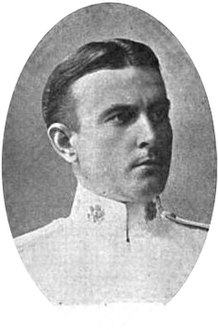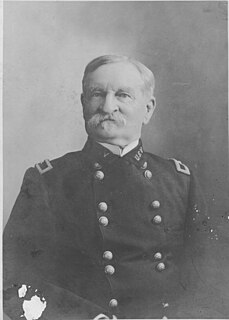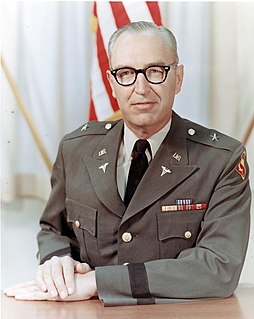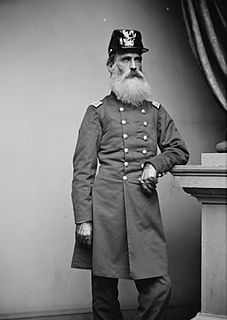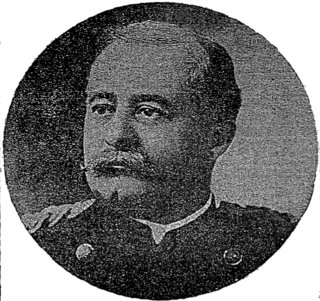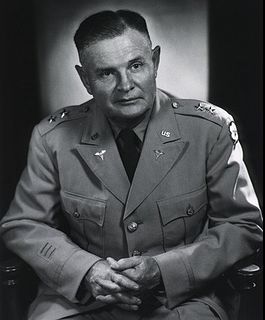During the war
Forwood attended Crozier Academy in Chester, Pennsylvania, earned his medical degree from the University of Pennsylvania, and was appointed as an Assistant Surgeon on August 5, 1861. He was assigned to Seminary Hospital in Georgetown, Washington, D.C., where he served initially as the hospital’s executive officer, then as regimental surgeon of the 14th U.S. Infantry, and then acting medical director of General Sykes’ division, V Corps, Army of the Potomac during the Peninsula campaign. He took part in the battles of Yorktown, Williamsburg, Gaines Mill and Malvern Hill before he was reassigned to the office of the Medical Director, Washington, D.C. in October 1862.

Chester is a city in Delaware County, Pennsylvania, United States. With a population of 33,972 at the 2010 census it is the largest city in Delaware County. Incorporated in 1682, Chester is the oldest city in Pennsylvania and is located on the western bank of the Delaware River between the cities of Philadelphia and Wilmington, Delaware.

The University of Pennsylvania is a private Ivy League research university in Philadelphia, Pennsylvania. It is one of the nine colonial colleges founded prior to the Declaration of Independence and the first institution of higher learning in the United States to refer to itself as a university. Benjamin Franklin, Penn's founder and first president, advocated an educational program that trained leaders in commerce, government, and public service, similar to a modern liberal arts curriculum.

The 14th Infantry Regiment is a United States Army light infantry regiment. It has served in the American Civil War, Boxer Rebellion, World War II, Korean War, Vietnam War, Operation Restore Hope, Operation Uphold Democracy, Operation Joint Guard, Operation Desert Storm, Operation Enduring Freedom, Operation Gothic Serpent, Operation New Dawn, Operation Resolute Support, and Operation Iraqi Freedom. The 14th Infantry Regiment did not take part in combat during World War I. It has also conducted peacekeeping and humanitarian missions in the Sinai Peninsula, Guantánamo Bay in Cuba, Bosnia, and Kosovo.
In February 1863, Forwood was assigned to the 6th U.S. Cavalry as an assistant surgeon. On May 13, 1863, Forwood was accompanying acting regimental commander George Henry Cram and two enlisted orderlies from General Buford’s headquarters back to their camp when they were captured by a band of Mosby’s guerillas. The group’s leader, Lieutenant Fairchild, after securing their horses and equipment, offered to release them if they would give their parole. Cram and the two soldiers did so and were released. Since medical officers on both sides had the right to be released without parole if captured, Forwood refused. Fairchild refused to release him without it, and turned him over to a guard detail as a prisoner of war. Forwood escaped into the brush while being marched away and returned to the regiment later that evening. This was quite an embarrassing incident for Captain Cram, and might be the reason Forwood spent the rest of the month on detached service at the Cavalry Corps’ dismount camp near Dumfries, Virginia. He returned to the regiment before the battle of Brandy Station.

George Henry Cram was a colonel in the Union Army during the American Civil War. He was nominated and confirmed for appointment to the grade of brevet brigadier general in 1867 in recognition of his performance during the war.

John Buford, Jr. was a United States Army cavalry officer. He fought for the Union as a brigadier general during the American Civil War. Buford is best known for having played a major role in the first day of the Battle of Gettysburg on July 1, 1863 while in command of a division.
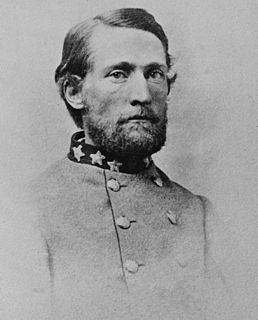
John Singleton Mosby, also known by his nickname, the "Gray Ghost", was a Confederate army cavalry battalion commander in the American Civil War. His command, the 43rd Battalion, Virginia Cavalry, known as Mosby's Rangers or Mosby's Raiders, was a partisan ranger unit noted for its lightning-quick raids and its ability to elude Union Army pursuers and disappear, blending in with local farmers and townsmen. The area of northern central Virginia in which Mosby operated with impunity was known during the war and ever since as Mosby's Confederacy. After the war, Mosby became a Republican and worked as an attorney and supported his former enemy's commander, U.S. President Ulysses S. Grant. He also served as the American consul to Hong Kong and in the U.S. Department of Justice.
During the Gettysburg campaign, Forwood was captured again. He was left in charge of the regiment’s wounded following the battle of Fairfield, among whose numbers was the other assistant surgeon, William H. Notson. This time he was released without incident, however, and rejoined his regiment for the remainder of the campaign.
On October 11, 1863, the 6th U.S. Cavalry was caught in an exposed position near Brandy Station and engaged by superior numbers of Confederate cavalry. They were able to fight their way back across the Rappahannock, but Forwood received a severe gunshot wound to the chest, ending his field service during the war.
Following his recovery from this wound, Forwood was assigned as the executive officer of Satterlee General Hospital in Philadelphia and served there until April 1864. He spent the next two months in charge of the medical stores ship Marcy C. Day in Hampton Roads. In June 1864, Forwood organized and built Whitehall General Hospital near Bristol, Pennsylvania. He commanded the two thousand bed hospital through the end of the war, until September 1865. On March 13, 1865 he was given brevet promotions of captain and major for faithful and meritorious service during the war.

Hampton Roads is the name of both a body of water that serves as a wide channel for the James, Nansemond and Elizabeth rivers between Old Point Comfort and Sewell's Point where the Chesapeake Bay flows into the Atlantic Ocean and the surrounding metropolitan region located in the Southeastern Virginia and Northeastern North Carolina portions of the Tidewater region.

Bristol Borough is a borough in Bucks County, Pennsylvania, 23 miles (37 km) northeast of Center City Philadelphia, opposite Burlington, New Jersey on the Delaware River. Bristol Borough predates Philadelphia, being settled in 1681 and first incorporated in 1720. After 1834, the town became very important to the development of the American Industrial Revolution as the terminus city of the Delaware Canal providing greater Philadelphia with the days High Tech Anthracite fuels from the Lehigh Canal via Easton. The canal and a short trip on the Delaware also gave the town access to the mineral resources available in Connecticut, New Jersey and New York via each of the Morris Canal, the Delaware and Hudson Canal, and the Delaware and Raritan Canal, and connected the community to those markets and trade from New York City. These were among the factors spurring development of Bristol and nearby towns, explaining in part the industries which developed in the region.
After the war
Forwood was next assigned to Fort Riley, where he served until June 1867. He was promoted to captain on July 28, 1866, and fought a severe epidemic of cholera there later in the year. His service at Fort Riley was punctuated by several field expeditions of the 2nd Cavalry against hostile Indians along the upper Arkansas River.
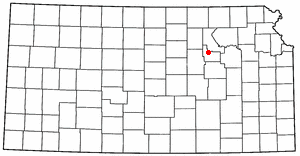
Fort Riley is a United States Army installation located in North Central Kansas, on the Kansas River, also known as the Kaw, between Junction City and Manhattan. The Fort Riley Military Reservation covers 101,733 acres (41,170 ha) in Geary and Riley counties. The portion of the fort that contains housing development is part of the Fort Riley census-designated place, with a residential population of 7,761 as of the 2010 census. The fort has a daytime population of nearly 25,000. The ZIP Code is 66442.

Cholera is an infection of the small intestine by some strains of the bacterium Vibrio cholerae. Symptoms may range from none, to mild, to severe. The classic symptom is large amounts of watery diarrhea that lasts a few days. Vomiting and muscle cramps may also occur. Diarrhea can be so severe that it leads within hours to severe dehydration and electrolyte imbalance. This may result in sunken eyes, cold skin, decreased skin elasticity, and wrinkling of the hands and feet. Dehydration can cause the skin to turn bluish. Symptoms start two hours to five days after exposure.

The Arkansas River is a major tributary of the Mississippi River. It generally flows to the east and southeast as it traverses the U.S. states of Colorado, Kansas, Oklahoma, and Arkansas. The river's source basin lies in the western United States in Colorado, specifically the Arkansas River Valley, where the headwaters derive from the snowpack in the Sawatch and Mosquito mountain ranges. It then flows east into the Midwest via Kansas, and finally into the South through Oklahoma and Arkansas.
Forwood was transferred to Fort Larned in June 1867, where he served until July 1870, apparently keeping a wolf and a buffalo as pets. The post commander ordered him to get rid of the buffalo, terming it a "public nuisance." On January 31, 1869, the post adjutant informed Forwood that "complaints have also been made of the howling of the wolf at night. It is therefore directed that you have the animal removed to someplace where it will not be an annoyance to the garrison." It is unknown what Forwood’s response was to this directive, but apparently he complied.
He was assigned to Fort Brady until October 1872, but a good part of this period was spent on a leave of absence studying yellow fever at a quarantine station near Philadelphia. He was also married during this leave, to Mary Osbourne on September 28, 1870. He was then assigned to Fort Richardson, Texas until September 1876. The next three years brought brief assignments to Raleigh, North Carolina, Columbia, South Carolina, and Fort McPherson, Georgia.

Raleigh is the capital of the state of North Carolina and the seat of Wake County in the United States. Raleigh is the second-largest city in the state, after Charlotte. Raleigh is known as the "City of Oaks" for its many oak trees, which line the streets in the heart of the city. The city covers a land area of 142.8 square miles (370 km2). The U.S. Census Bureau estimated the city's population as 479,332 as of July 1, 2018. It is one of the fastest-growing cities in the country. The city of Raleigh is named after Sir Walter Raleigh, who established the lost Roanoke Colony in present-day Dare County.

Columbia is the capital and second largest city of the U.S. state of South Carolina, with a population estimate of 134,309 as of 2016. The city serves as the county seat of Richland County, and a portion of the city extends into neighboring Lexington County. It is the center of the Columbia metropolitan statistical area, which had a population of 767,598 as of the 2010 United States Census, growing to 817,488 by July 1, 2016, according to 2015 U.S. Census estimates. The name Columbia is a poetic term used for the United States, originating from the name of Christopher Columbus.
In December 1879, Forwood was transferred to Fort Omaha as the post surgeon. During the next three years, he served as a surgeon and naturalist for the annual military reconnaissance and exploring expeditions ordered by General Philip Sheridan. In November 1882 he was assigned to Chicago as the attending surgeon for the headquarters of the Division of the Missouri. He again accompanied the exploring expedition in the summer of 1883, this time in the company of President Chester A. Arthur and Secretary of War Robert T. Lincoln. He published his observations from these expeditions in 1881 and 1882. He remained at Chicago until December 1886. Following another leave of absence, he then served for three years as the post surgeon for Fort Snelling.
On May 27, 1890, Forwood was assigned as an attending surgeon at the United States Soldiers’ Home in Washington, D.C., where he remained until December 12, 1898. He was promoted to lieutenant colonel on June 15, 1891, and was appointed the professor of military surgery when the Army Medical School was organized in 1893. From 1895 to 1897 he chaired the departments of surgery and surgical pathology at Georgetown University. On May 3, 1897, he was promoted to colonel, ranking only behind the Surgeon General in the Medical Corps. He chaired the department of military surgery at the same university from 1897 to 1898 and received and honorary degree of LL.D. for his contributions.
Forwood departed the university in the summer of 1898 to establish a large hospital and convalescent camp at Montauk, New York to deal with the huge numbers of sick soldiers returning from Cuba. He selected the site and oversaw the construction of a similar facility at Savannah, Georgia later in the same year. In December 1898 he was transferred to San Francisco, California as the chief surgeon of the Department of California.
In 1901 he was assigned to duty in the office of the Surgeon General in Washington, and that fall was made president of the faculty of the Army Medical School. When Surgeon General Sternberg retired, Forwood was promoted to the post on June 8, 1902. He served as the Surgeon General for his last three months before compulsory retirement for age on September 7, 1902. He lived the rest of his life in Washington, dying after a prolonged illness on May 12, 1915.
Forwood and his wife are buried in Section 1 of Arlington National Cemetery.



















